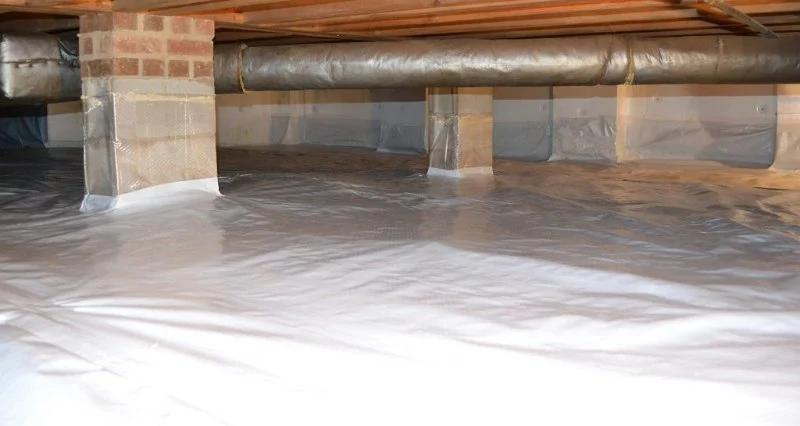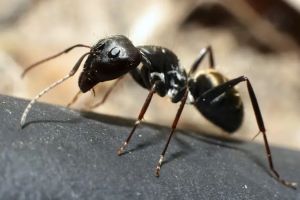
- Why Keeping Crawlspaces Dry is Important
- Understanding the Relationship Between Moisture and Pests
- Steps to Keep Crawlspaces Dry
- Effective Pest Control Strategies for Crawlspaces
- Monitoring and Maintaining Dry, Pest-Free Crawlspaces
1. Why Keeping Crawlspaces Dry is Important
Crawlspaces are often overlooked areas of the home, but they can become breeding grounds for pests and mold if not properly maintained. Keeping crawlspaces dry is crucial for preventing moisture-related problems like wood rot, mold growth, and pest infestations. A dry crawlspace also helps to maintain the structural integrity of your home, as excessive moisture can weaken foundation walls and promote the growth of harmful organisms.

Abair Lavery
West HartfordCapitol Planning RegionConnecticut
32 Brixton St, West Hartford, CT 06110, USA
1.1. Moisture and Its Impact on Your Home
Excess moisture in crawlspaces can seep into your home’s foundation, leading to structural issues over time. It can cause the wooden beams and supports in your crawlspace to rot, leading to costly repairs. Additionally, moisture provides an ideal environment for pests like termites, rodents, and cockroaches to thrive. By keeping the crawlspace dry, you can mitigate these risks and ensure the longevity of your home’s foundation.
1.2. Health Risks Associated with Damp Crawlspaces
When a crawlspace becomes damp, it doesn’t only affect your home’s structure. The increase in humidity can lead to poor indoor air quality, which may contribute to respiratory issues such as allergies and asthma. Mold and mildew are common in damp environments and can spread to the living areas above, posing additional health risks to your family.
2. Understanding the Relationship Between Moisture and Pests
Pests are highly attracted to areas with high moisture levels, making crawlspaces a prime target for infestations. Moisture doesn’t just make it easier for pests to find shelter; it also provides them with a source of water, which is vital for survival. To prevent pests from infiltrating your crawlspace, it’s important to address moisture issues early on.
2.1. How Moisture Attracts Common Pests
Many pests, like termites, rodents, and cockroaches, thrive in damp environments. Termites, for example, are drawn to wood that has been softened by moisture, while rodents seek out wet, hidden spaces for shelter. Cockroaches are another common pest found in moist crawlspaces, as they are attracted to water sources and the organic material present in damp areas.
2.2. Pest Breeding Grounds in Wet Crawlspaces
Moist crawlspaces offer ideal conditions for pests to breed and multiply. For instance, standing water can attract mosquitoes, which use stagnant water to lay their eggs. Additionally, the organic debris that accumulates in damp areas can serve as a food source for pests, further encouraging infestations. The more moisture in a crawlspace, the higher the likelihood of pests taking up residence there.
3. Steps to Keep Crawlspaces Dry
Preventing moisture buildup in crawlspaces requires proactive measures and regular maintenance. Here are some effective steps you can take to keep your crawlspace dry and avoid pest problems:
3.1. Install Vapor Barriers
Vapor barriers are an essential tool for keeping moisture from seeping into crawlspaces. These heavy-duty plastic sheets cover the floor and walls of the crawlspace, preventing moisture from the ground from rising. Installing a vapor barrier can significantly reduce humidity levels and prevent the growth of mold and mildew. Make sure the barrier is sealed tightly to avoid gaps where moisture could still enter.
3.2. Improve Ventilation
Proper ventilation is crucial for keeping crawlspaces dry. Ensure that your crawlspace has adequate airflow by installing vents or exhaust fans. Ventilation helps to expel humid air and bring in fresh air, which helps maintain a balanced level of moisture. A well-ventilated crawlspace is less likely to accumulate excess moisture, thus preventing mold growth and pest infestations.
3.3. Fix Leaks and Plumbing Issues
One of the main sources of moisture in crawlspaces is leaks in pipes or walls. Regularly inspect your plumbing for leaks, as even small drips can create a damp environment over time. Fixing leaks promptly is crucial to preventing moisture buildup. Also, check for leaks in the foundation or walls that might allow rainwater to enter the crawlspace and cause further moisture issues.
3.4. Use Dehumidifiers
In particularly damp areas, using a dehumidifier can help reduce humidity levels and keep the crawlspace dry. Dehumidifiers remove moisture from the air, making it less conducive to pest infestations and mold growth. Consider investing in a dehumidifier designed for crawlspace use, as these units are specifically built to handle the unique conditions of this space.
4. Effective Pest Control Strategies for Crawlspaces
Once you’ve taken steps to keep your crawlspace dry, it’s important to implement pest control strategies to prevent infestations. Here are some methods to ensure your crawlspace remains pest-free:
4.1. Seal Entry Points
One of the most effective ways to prevent pests from entering your crawlspace is by sealing any gaps or cracks in the foundation, walls, or vents. Pests can squeeze through even the smallest openings, so check for cracks and seal them using caulk or weatherstripping. Pay special attention to the areas where pipes or wires enter the crawlspace, as these are common entry points for pests.
4.2. Use Non-Toxic Pesticides
If pests do make their way into your crawlspace, consider using non-toxic pesticides to manage the infestation. There are many natural and eco-friendly pest control options available that are safe for both humans and pets. Essential oils, like peppermint or eucalyptus, can be used to repel common pests. Alternatively, diatomaceous earth is a non-toxic powder that can be sprinkled around the crawlspace to kill insects without harming the environment.
4.3. Regular Inspections
Regular inspections are key to maintaining a dry, pest-free crawlspace. At least once every season, check the condition of the vapor barrier, look for leaks, and examine for signs of pests. Early detection is the best way to prevent a full-blown infestation and ensure the continued health of your crawlspace.
5. Monitoring and Maintaining Dry, Pest-Free Crawlspaces
Once you’ve implemented the necessary moisture control and pest management measures, it’s important to continue monitoring your crawlspace regularly. Keep an eye on the humidity levels and inspect for any signs of pest activity. Even after taking the proper precautions, issues can arise, so ongoing vigilance is key to maintaining a dry, pest-free crawlspace.
5.1. Using Moisture Meters
To monitor the humidity levels in your crawlspace, consider using a moisture meter. This tool allows you to detect moisture in the air and on surfaces, giving you a clear indication of whether further action is needed. Keeping the humidity levels in check will ensure that your crawlspace remains dry and pest-free.
5.2. Consistent Maintenance
Make sure to consistently maintain your crawlspace by cleaning up any debris, checking the ventilation system, and replacing damaged vapor barriers. Regular maintenance ensures that your crawlspace stays dry and prevents pests from finding new ways to enter.
By taking proactive steps to keep your crawlspace dry and pest-free, you can prevent costly repairs, protect your home’s foundation, and maintain a healthier living environment. For more tips, products, and pest control services, visit PestControlHub to find the best solutions for your crawlspace maintenance needs.








 Wildlife Resolutions4.0 (443 reviews)
Wildlife Resolutions4.0 (443 reviews) Pest Marshals of Toledo5.0 (2 reviews)
Pest Marshals of Toledo5.0 (2 reviews) LS Rodent Proofing & Pest Control Service5.0 (4 reviews)
LS Rodent Proofing & Pest Control Service5.0 (4 reviews) Best Termite & Pest Control4.0 (16 reviews)
Best Termite & Pest Control4.0 (16 reviews) Varment Guard Wildlife Services5.0 (28 reviews)
Varment Guard Wildlife Services5.0 (28 reviews) Pestban Inc4.0 (394 reviews)
Pestban Inc4.0 (394 reviews) How to Use Monitors to Detect Pest Entry: A Comprehensive Guide
How to Use Monitors to Detect Pest Entry: A Comprehensive Guide How to Predict Which Pests Will Invade Next – Smart Pest Forecasting for the U.S.
How to Predict Which Pests Will Invade Next – Smart Pest Forecasting for the U.S. How to Conduct a Pest Risk Assessment at Home – Expert Guide
How to Conduct a Pest Risk Assessment at Home – Expert Guide How to Block Pest Entry Around Deck Joists: Effective Solutions
How to Block Pest Entry Around Deck Joists: Effective Solutions How to Safely Use Fumigation Methods: A Comprehensive Guide for Homeowners
How to Safely Use Fumigation Methods: A Comprehensive Guide for Homeowners Why Pests Are More Active After Rain: Understanding the Link Between Weather and Pest Behavior
Why Pests Are More Active After Rain: Understanding the Link Between Weather and Pest Behavior